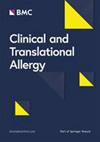Factors that influence user adherence of the Mask-air® application
Abstract
Background
Monitoring adherence in chronic diseases remains a significant challenge. Allergic rhinitis (AR), one of the most common chronic conditions, serves as an excellent model for studying determinants of app use in monitoring adherence and health assessment during treatment. The Mask-air® app supports clinical decision-making by involving patients in symptom observation and promoting adherence to therapy. This study aimed to identify the defining characteristics of Mask-air® users, describe their disease phenotype and satisfaction with the app, and explore reasons for discontinuation.
Materials and Methods
Adult patients 20–44 years old suffering from AR (n = 198) receiving care at an allergy outpatient clinic were invited to participate in a trial using the Mask-air® app. Investigators collected data on symptoms, administered treatments, and clinical evaluation results through questionnaires. At a follow-up visit (n = 163), these were compared, and patients were questioned about their satisfaction with the app. Patients presented their app records, and those who declined or stopped using the app were asked to provide reasons in a questionnaire.
Results
No distinguishing characteristics of Mask-air® users (n = 131) were identified compared with those who declined the app (n = 67). App readiness was analyzed according to age, socioeconomic status, disease severity, comorbidities, and therapeutic modality. Respondents were categorized into: those who did not install the app (17.7%), those who installed but did not use it (16.2%), and those who installed and evaluated it (66.2%), with 15.6% failing to produce symptom monitoring records. Overall, satisfaction ratings were high though patients were critical of the app's therapeutic aspect.
Conclusions
The study found no specific features distinguishing Mask-air® users, suggesting that it can be recommended to all patients regardless of gender, socioeconomic or educational status, or disease phenotype. However, with a dropout rate of nearly 50%, it is essential for clinicians to emphasize the app's benefits to improve adherence and engagement.


 求助内容:
求助内容: 应助结果提醒方式:
应助结果提醒方式:


